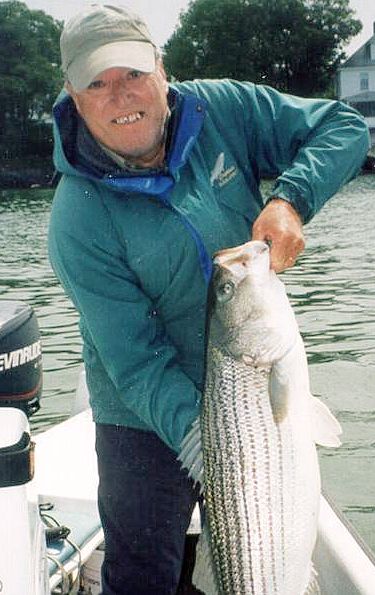How
is it possible to catch big striped bass on a fly other than just being lucky?
I’m asked that question a lot.
People who fly fish for striped bass are generally happy catching school sized,
those 20 to 26 inches or smaller along with some mid sized fish from 28 inches
up. It’s those fish on the up size one would call somewhat big. Stripers that
really get noticed are over 30 inches and when they get to be over 40 inches
they are considered by most to be truly big stripers.
I will be discussing how to
target big striped bass, not just getting luck.
A big striped bass will test
every aspect of your game. It goes without saying; equipment should be in top
condition. Fly rods in the ten to 12 weight rating with plenty of backbone to
fight the fish are recommended. I use a Temple Fork Outfitters Mangrove series
rod. It has plenty of casting ability and fighting qualities. When that take
and fish of a life time presents itself, you don’t want to be using a fly rod
that isn’t up to the challenge.
You don’t need to spend a
thousand dollars on a fly reel that will handle a 40 pound striped bass. That
reel does need to have a strong and reliable drag. There are many fly reels on
today’s market with sealed drags systems and plenty of line capacity costing
$300 or less which will get the job done. I am using Temple Fork Outfitters IV,
BVK reels for the job. The drag is strong. It is loaded with 200 yards of 40
pound Cortland Duncan
When targeting large stripers I
like to use a 425 to 625 grain Cortland Deep Salt fly line, even in shallow
water. I is amazing how little you fill get fouled on the bottom. I think
current has a lot to do with that. Big fish like to stay deep. There are times
on sand and mud flats in low light situations when larger fish can be taken
using an intermediate density fly line. If you like that situation, don’t be
bashful about using such lines.
(Page
Rogers Big Eye Bunker fly patterns)
Flies are a lengthy discussion.
In general, big stripers like big flies. That said, I have taken them with some
pretty small flies at times. On average, I like to use big and bigger flies.
Small hook sizes for me are 3/0 and 4/0 and usually I am using 6/0 to 7/0 while
targeting larger fish. A good pattern available commercially is Page Rogers Big
Eye Bunker in chartreuse color or black at first and last light. Just before
the first rays of sun reach the water, keep the chartreuse color on. When the
first rays of sun reach the water, keep the chartreuse color on. My favorite
pattern is a 6/0 R2-T2 in chartreuse. Oh, did I mention that chartreuse is a
good color?
Mid summer in Maine
I will fish a spot for three to
four drifts, making wide return up current on each approach. With no action, I will
go to location two and do the same thing. And then back to location one to try
again and repeat the process until the first rays of sun reach the water.
Continue this process all summer
and you will catch a fish of a life time. Good luck.

